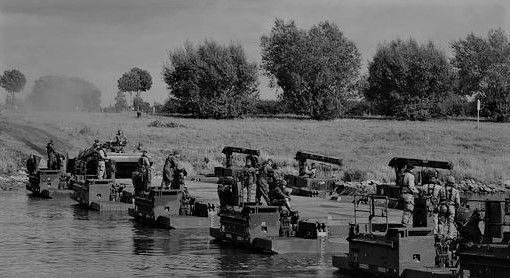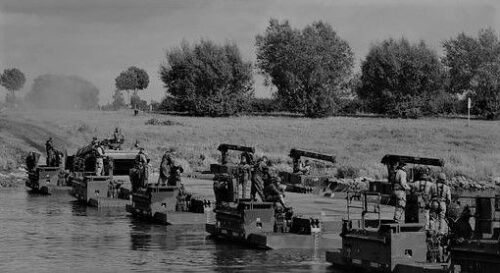(HTML version) by Carl Conetta, PDA Briefing Report #13, 18 January 2002. Examines the extent and causes of civilian bombing casualties in the Afghanistan war and explores why the civilian casualties were higher than in the Serbia/Kosovo campaign despite fewer bombs dropped. Includes appendices: estimation of civilian bombing casualties: method and sources; resolving discrepancies in casualty accounts.
cknight
Bush Administration Policy Toward Europe: Continuity and Change
German Defense Planning: In a Crucial Phase
A Response to Ivan Eland’s “Bush Versus the Defense Establishment” in Issues in Science and Technology Forum, Fall 2001
Cooperative Action Against Terrorism
Beyond bin Laden: The Temptations of a Wider War
What Justifies Military Intervention?
Fear Itself: Hazards of Massive Retaliation
(HTML version) by Neta C. Crawford, PDA Guest Commentary, 14 September 2001.
A New US Military Strategy: Issues and Options
Disengaged Warfare: Should we make a virtue of the Kosovo way of war?
Rotocraft for War: Descending on a Military Dilemma
The Paradoxes of post-Cold War US Defense Policy: An Agenda for the 2001 Quadrennial Defense Review
Concepts for Army Transformation: A Briefing for the Transformation Task Force
Bigger Budgets Will Not Cure the Pentagon’s Ills
Can the United States Spend Less on Defense? — Toward a Smaller, More Efficient, and More Relevant US Military
The Armed Forces: “used too much and supported too little”?
Kosovo and the Just War Tradition
Wheels or Tracks? On the “Lightness” of Military Expeditions
U.S. Military-Strategic Ambitions — Expanding to Fill the post-Soviet Vacuum
Europe’s Armed Forces at the Millennium: A Case Study of Change in France, the United Kingdom, and Germany
Evaluating the Post-Cold War Policy of the United States
Don’t Court Disaster In Iraq
Slovenian Security in the European Perspective
Interventionism Reconsidered: Reconciling Military Action With Political Stability
The Coming Transformation of the Muslim World
Alleged ‘Carrier Gap’ is Out to Sea
The Readiness Crisis of the U.S. Air Force: A Review and Diagnosis
Military Strategy Under Review
“’Environment shaping’, the other ascendant element in the new strategy, prescribes a more active peacetime use of military power to influence the course of strategic affairs. It encompasses not only traditional deterrence, but also the goals of discouraging other nations from even trying to compete militarily with the U.S. and of ‘preventing the emergence of a hostile regional coalition or hegemon’ Key to achieving this novel “preemptory” deterrence is the maintenance of a robust U.S. regional presence, a daunting degree of U.S. military superiority, and a technological edge that no prospective competitor could hope to diminish.”
Nato Expansion: Costs and Implications
Maneuver Warfare Principles and Terms
By Carl Conetta, Project on Defense Alternatives, Briefing Memo, 12 March 1998.
 In the words of one strategic analyst, attrition is “war waged by industrial methods.” In the attrition approach, the adversary is defined as a series of targets to be “serviced” (that is, destroyed). Other than the achievement of initial surprise in the attack, there is little art or artifice in the approach. As an ideal type it takes as its prime objective the physical destruction of the adversary’s material strength; it associates success with material superiority; and it adopts as a basic principle the simple imperative; “more.”
In the words of one strategic analyst, attrition is “war waged by industrial methods.” In the attrition approach, the adversary is defined as a series of targets to be “serviced” (that is, destroyed). Other than the achievement of initial surprise in the attack, there is little art or artifice in the approach. As an ideal type it takes as its prime objective the physical destruction of the adversary’s material strength; it associates success with material superiority; and it adopts as a basic principle the simple imperative; “more.”
In maneuver warfare, by contrast, “the goal is to incapacitate by systemic disruption” and dislocation. The target is the coherence of the adversary’s combat systems, methods, and plans. The hope is that a very selective action can have a cascading effect — an effect disproportionately greater than the degree of effort. An analogy from architecture would be the removal or destruction of the keystone of an arch. Here the arch is conceived as a “system” whose dynamic element is gravity which has been converted to useful purpose by the positioning of the keystone — the removal of which disrupts the stability of the system, resulting in its destruction.
The three basic principles of maneuver warfare are: (1) identify and target enemy centers of gravity, (2) set and maintain favorable terms of battle, and (3) find and exploit “gaps” in enemy strength.
In the example of the arch, the keystone is a “center of gravity” (in the strategic, not literal sense). Notably, it is not a “weakness,” nor a “strength” of the system (arch), but rather a source or enabler of strength. In war, centers of gravity are not absolute, but instead relative to the adversary’s character, methods, objectives, and plans. (In the First and Second World Wars, for instance, one of the Allied powers’ strategic centers of gravity was the secure industrial capacity of the United States, which Germany targeted indirectly by means of submarine warfare.) If centers of gravity have a universal or defining attribute, it is this: attacking them successfully has a cascading or catastrophic effect on enemy morale, organization, and operations. Centers of gravity exist at every level of war, and the epitome of maneuver is for a unit to upset an enemy center at one or more levels higher than its own level of organization, and to do so with minimal combat.
Setting the terms of battle (which among other things may include time, place, pace, intensity, and type of engagement) means ensuring that combat proceeds under conditions favorable to the defense. In general, the aim is to set terms that accentuate friendly strengths and enemy weaknesses while minimizing friendly vulnerabilities and enemy strengths. The challenge for the practitioner of maneuver is to establish and maintain this condition.
Despite its linear connotation, the injunction to “find and exploit gaps” means aligning friendly strength against enemy weakness in the combat process. Success in setting the terms of battle facilitates this effort while restricting enemy opportunities to exploit gaps in friendly strength.
The three aspects of maneuver operate together to achieve disproportionate effects, in the following fashion: centers of gravity define the objective, the imperative to find and exploit “gaps” defines the approach to the objective, and setting the terms of battle facilitates the effort overall while controlling for enemy counter-initiatives. Indeed, the greater the success in setting the overall terms of battle, the easier it is to find gaps and compromise centers of gravity.
Any significant success in the maneuver contest depends on first, achieving and maintaining a relative advantage in the flow of accurate information, and second, possessing greater relative flexibility in the allocation of combat power.
Maneuver Warfare Principles and Terms
by Carl Conetta, PDA Briefing Memo, 12 March 1998. ⇒ HTML
A brief on the terminology and principles of maneuver warfare as distinct from attrition warfare.


